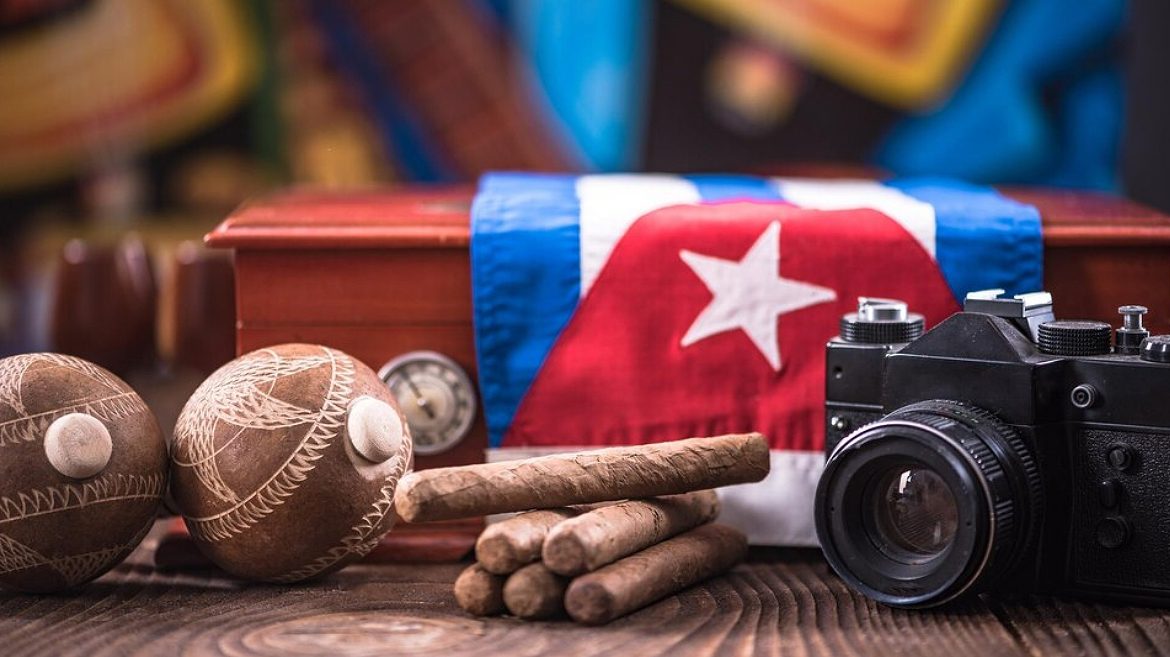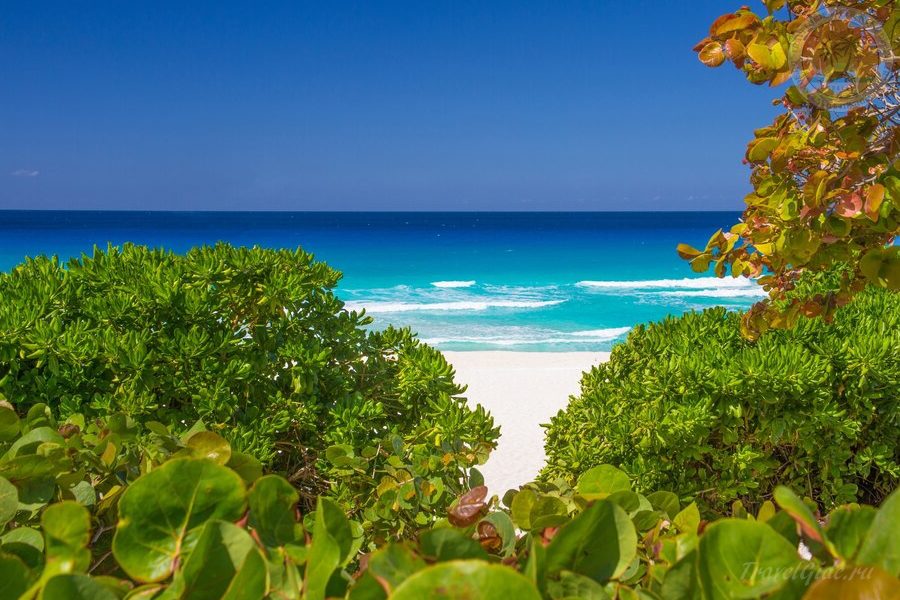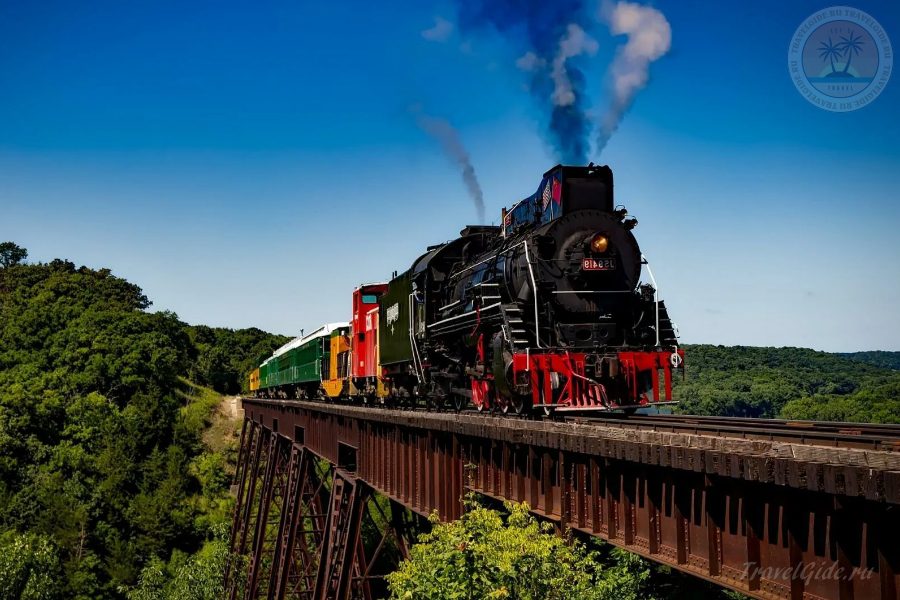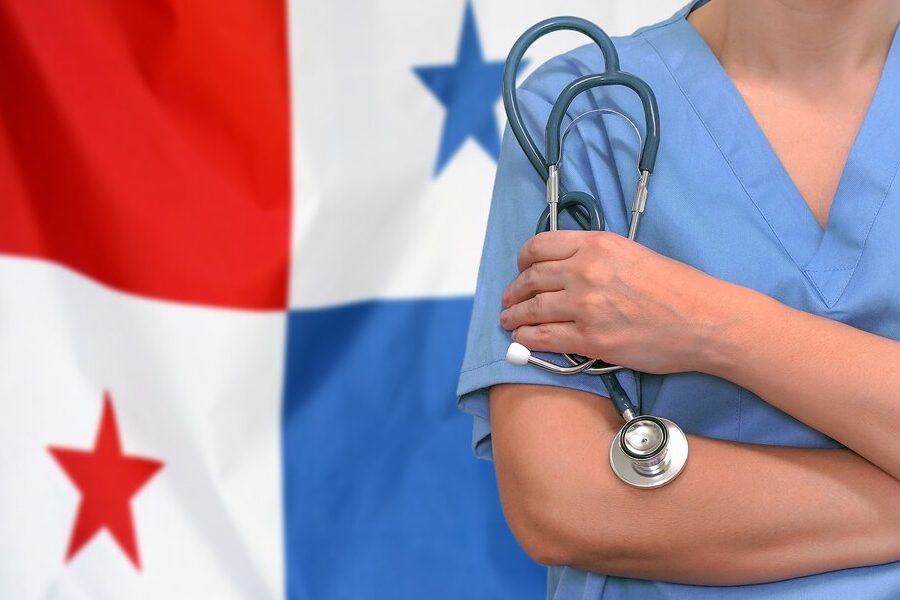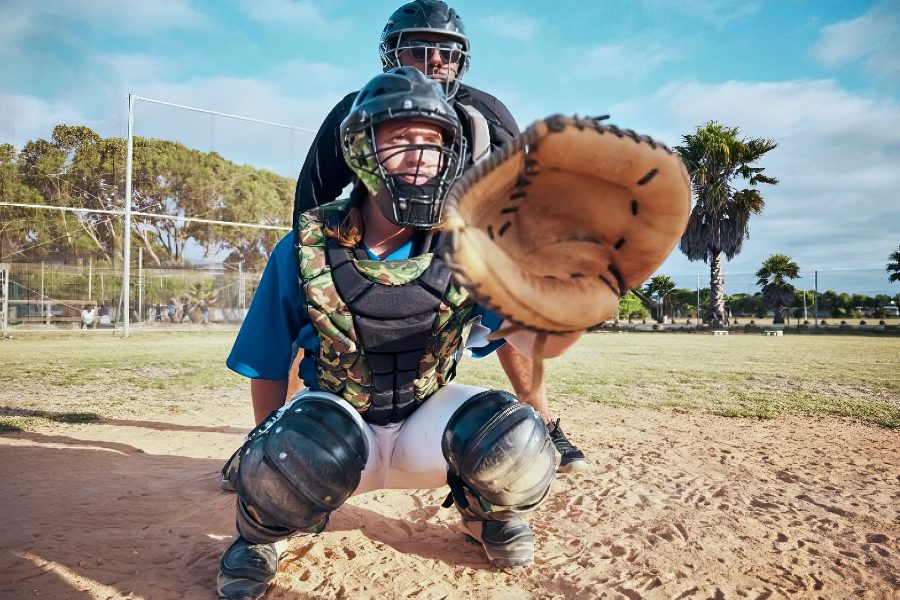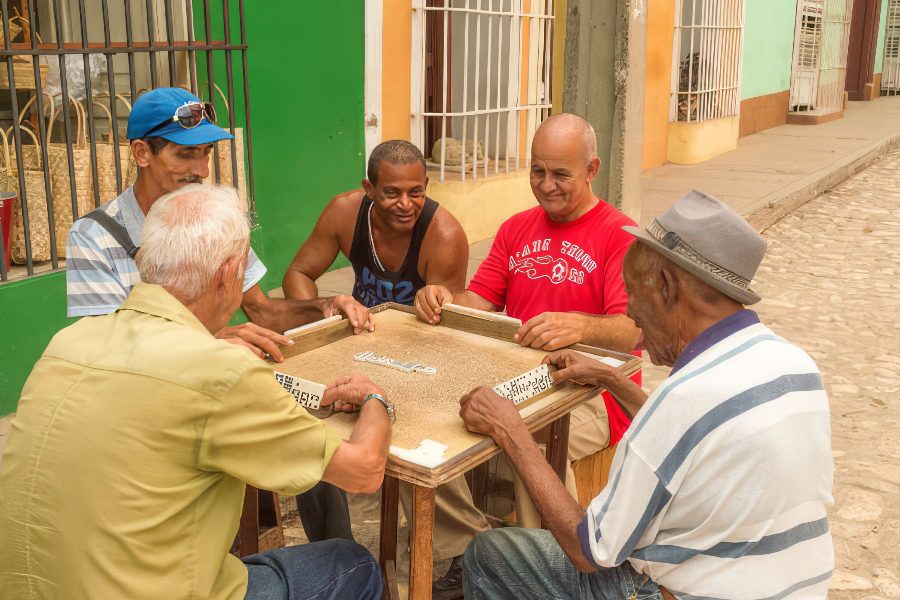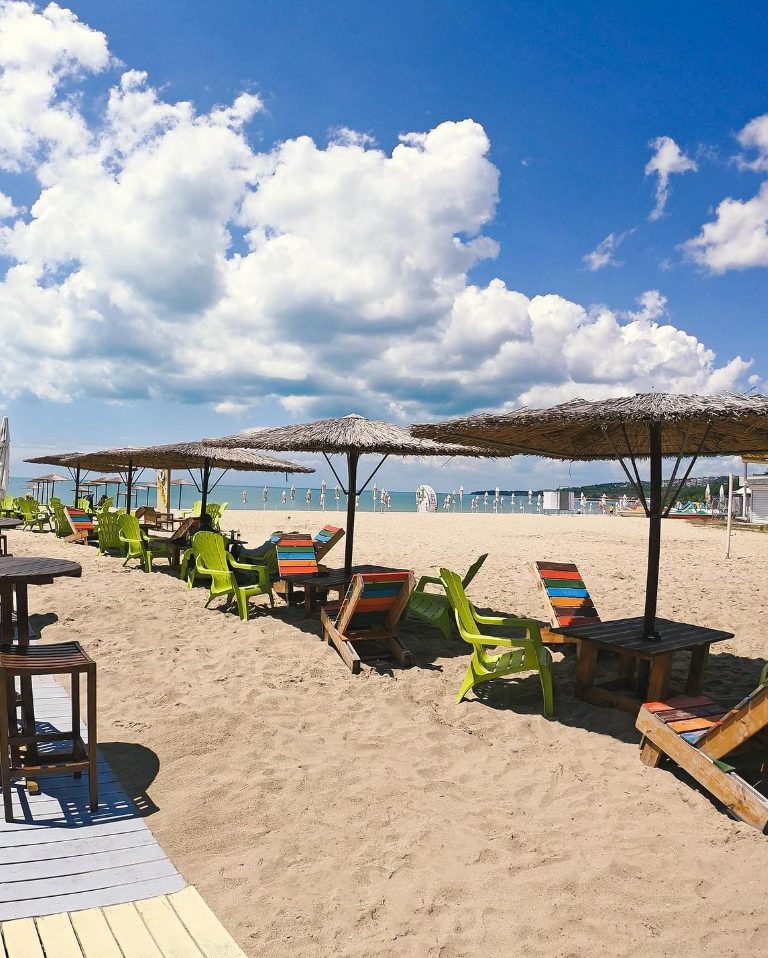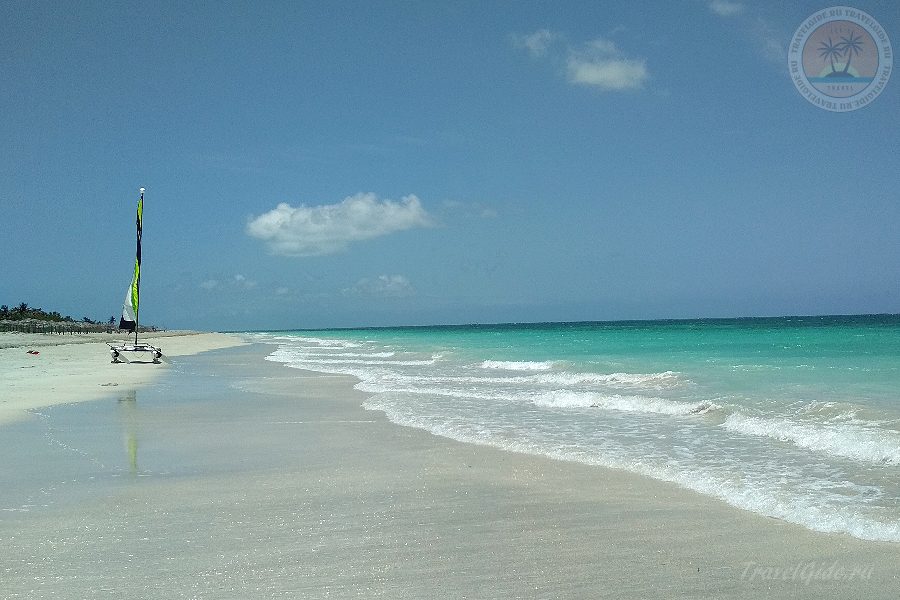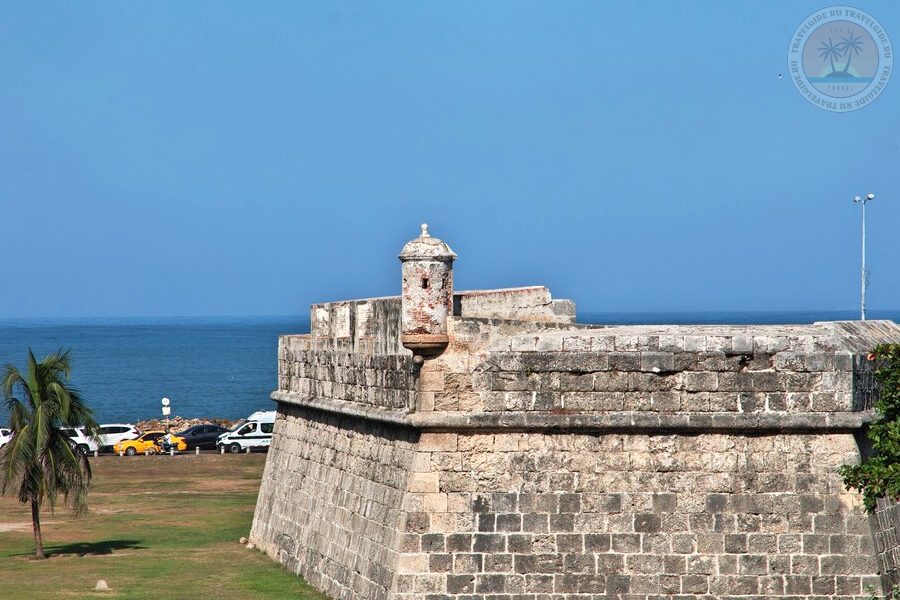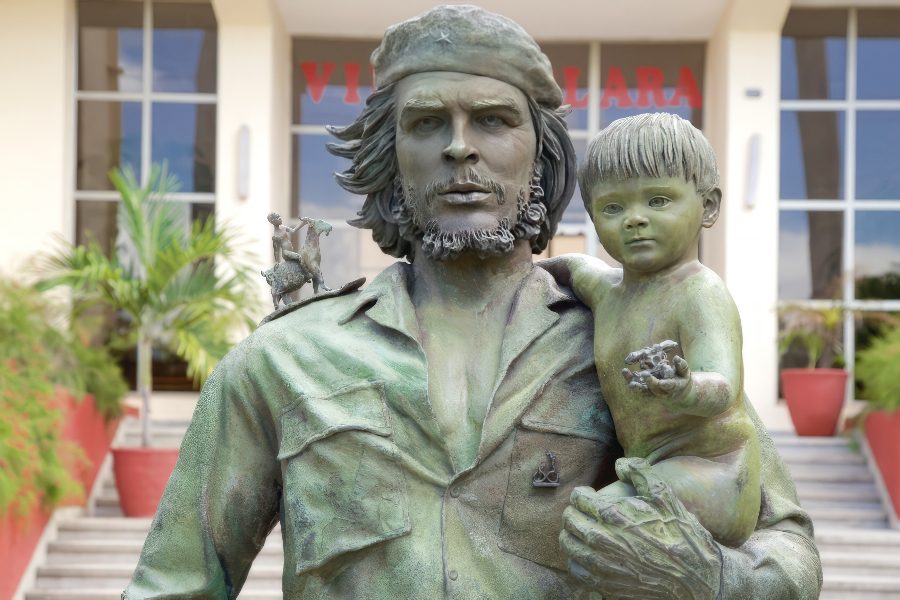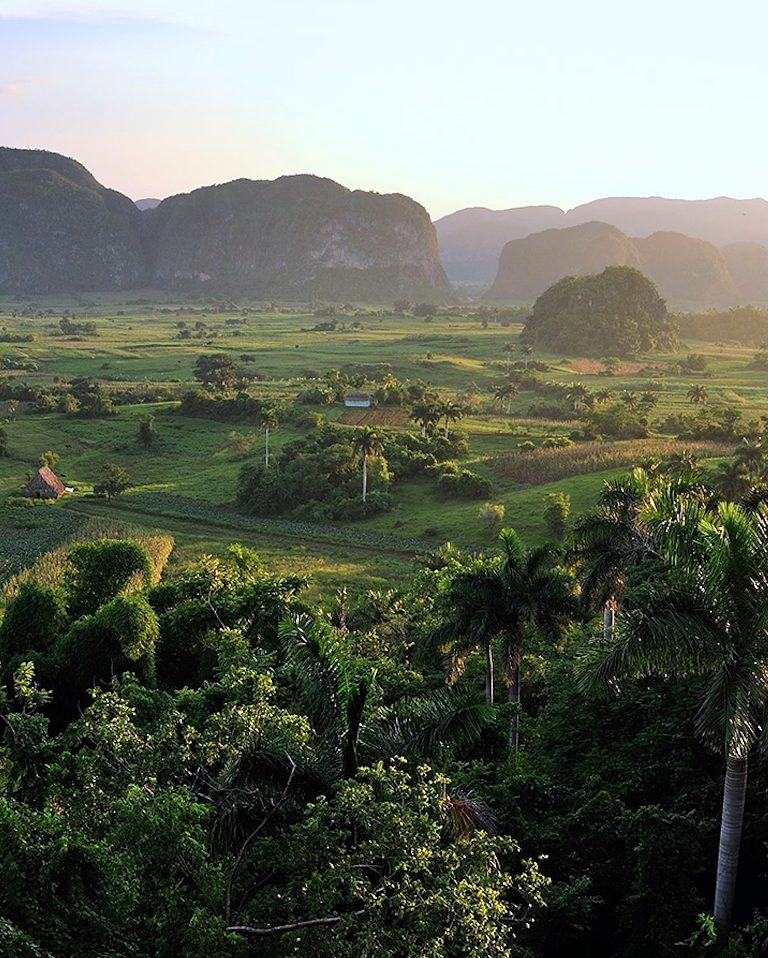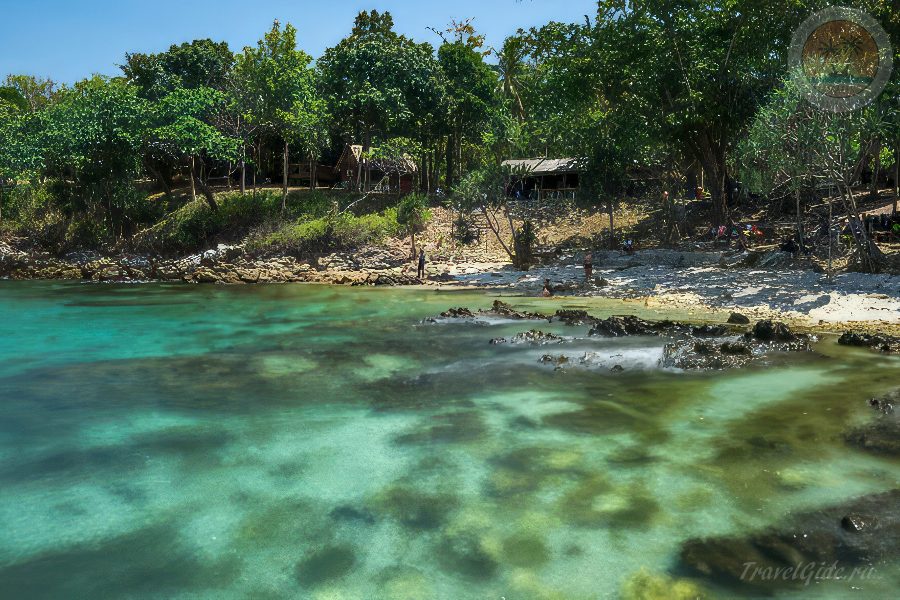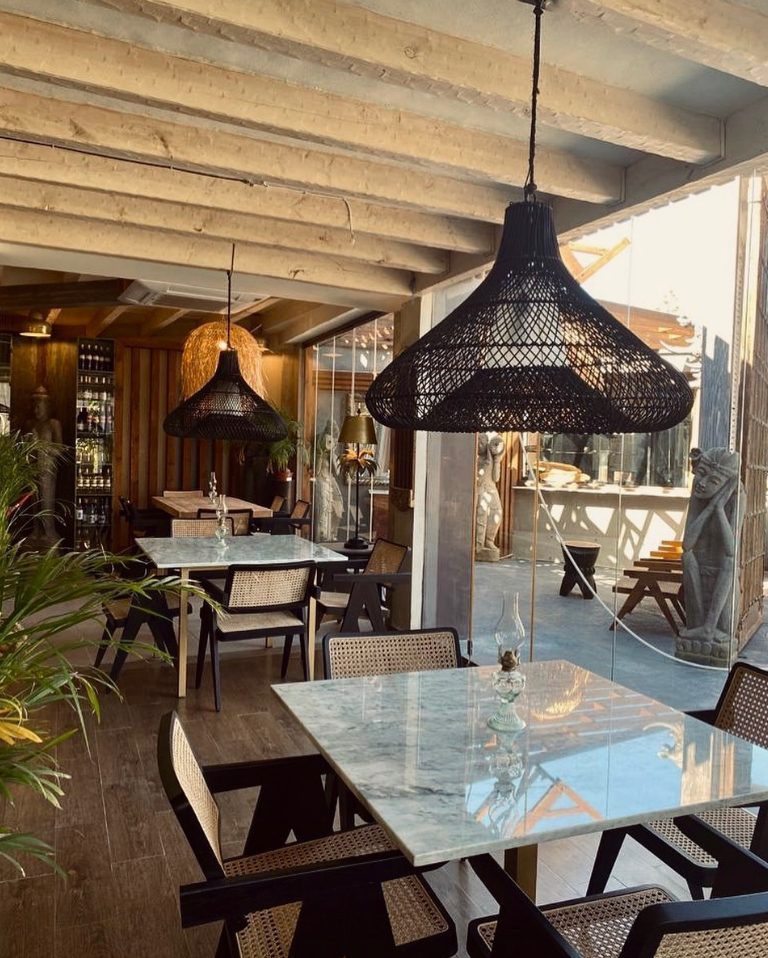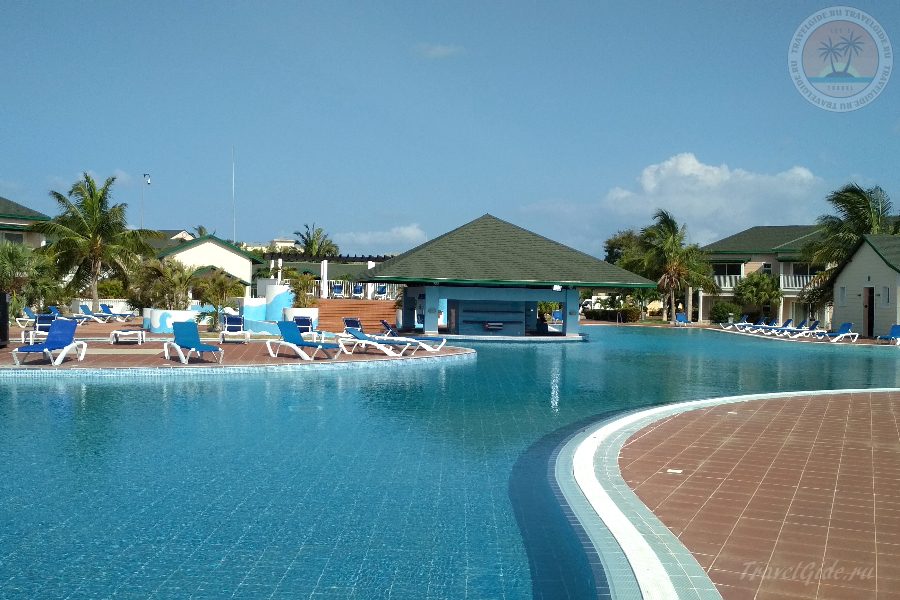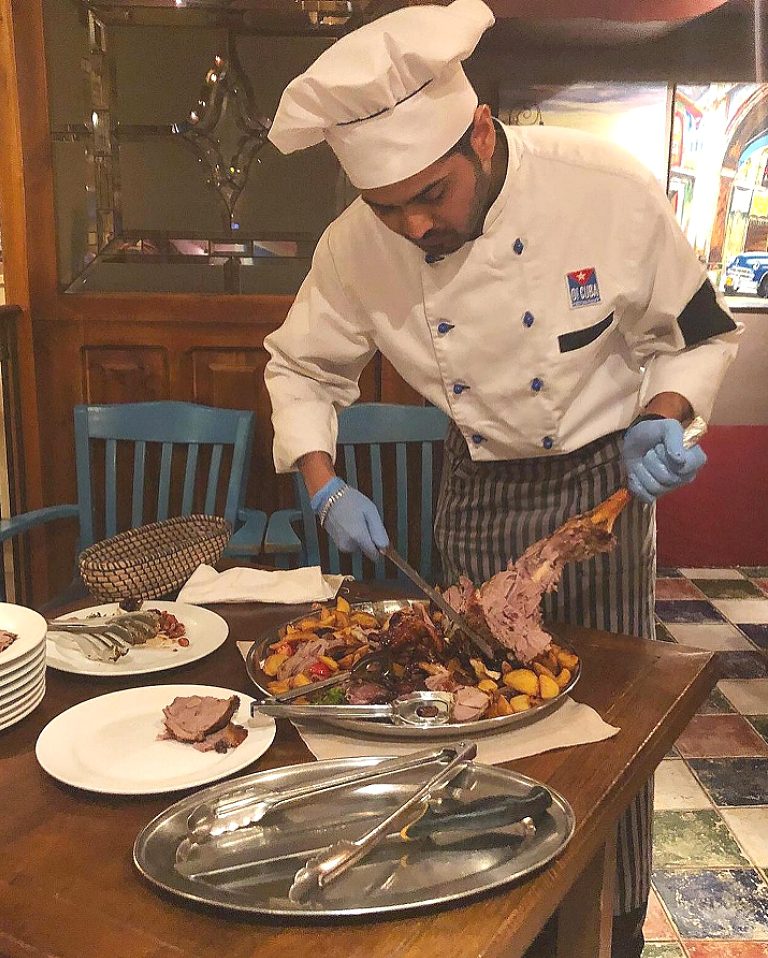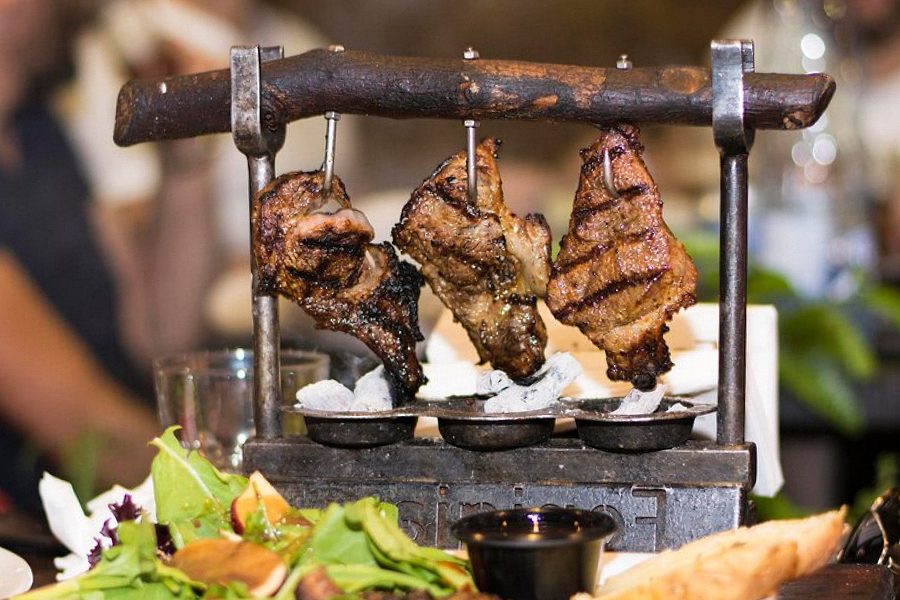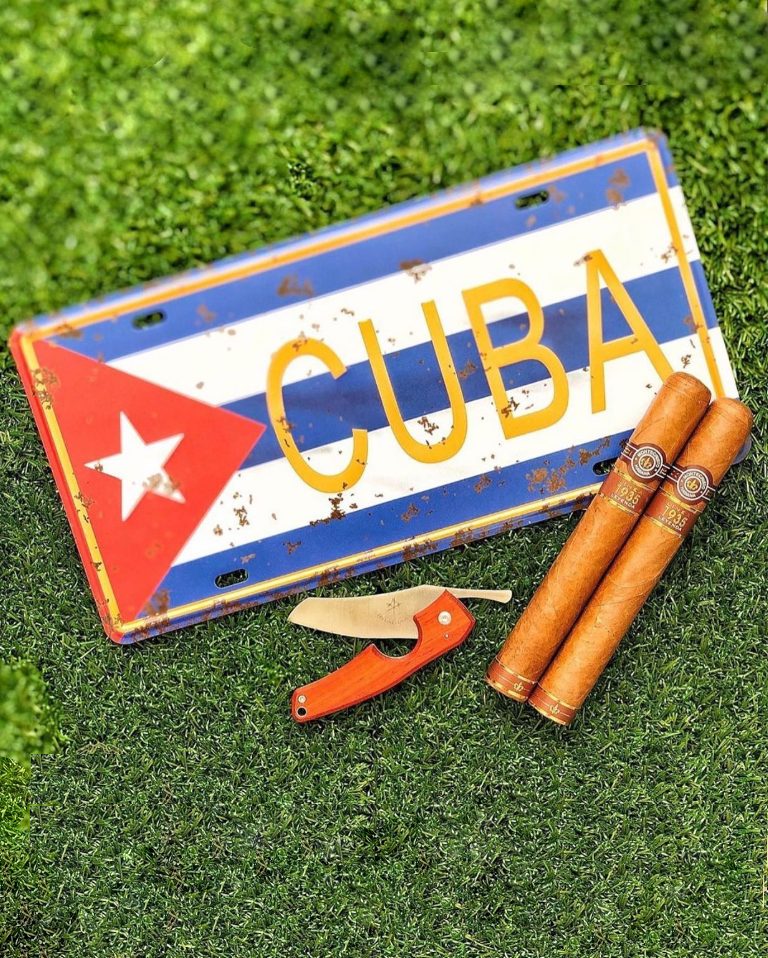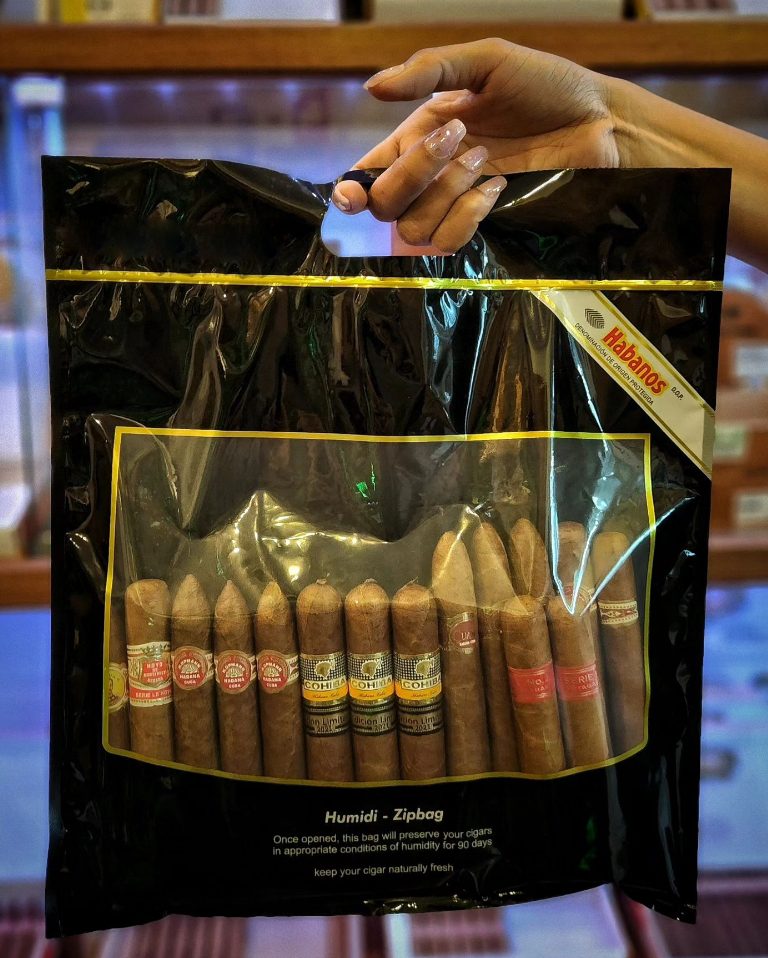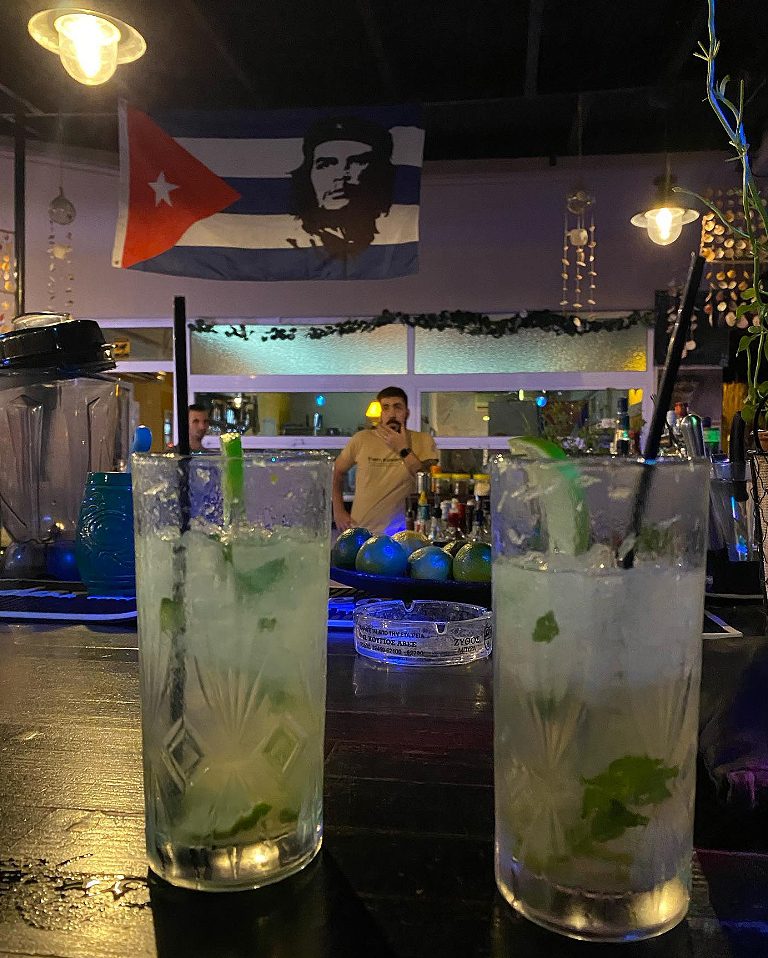70+ facts about Cuba: geography, history, society and tourism
Important and useful information about the “Island of Freedom” for tourists and travelers...
Tosomeone calls Cuba an island or a country of contrasts and, of course, they are right in many respects. After all, on the one hand, the atmosphere of bygone years reigns supreme here: old, even antique cars, a provincial way of life, a lack of visible technological progress. On the other hand, Cuba has something that would seem at least strange to expect, and certainly some facts about the largest state in the Caribbean will definitely surprise you.
Geography: facts about Cuba
Before going on vacation to Cuba, it would be a good idea to familiarize yourself with the basic geographical facts about this country. Perhaps this knowledge will not fundamentally affect the quality of your vacation on Liberty Island, but a clear idea of where you will be is not at all superfluous. Moreover, we are talking only about a few basic facts of Cuban geography.
- Location, area, composition. Cuba is an island country located on the largest island in the Caribbean, with its capital Havana. The area of the island is more than 110 thousand km2. Cuba is approximately the same area as Iceland. But the territory of the state also includes a number of small islands and coral reefs, of which there are more than 4 thousand. The largest of them are Isla de la Juventud, Cayo Largo and Cayo Romano.
- Coastline. The coastline of Cuba is highly indented. The total length of the coastline is more than 5,750 km, and this length does not include the islands.
- Highest point. The highest point of the island of “cigars, rum and salsa” is Turquinoyo Peak in the Sierra Maestra Mountains and its altitude approaches 2000 meters above sea level.
- Climate and temperature. Cuba is located in the tropical climate zone, and therefore has a hot and humid climate. Average temperatures in the winter are +25-28°C, +30°C in the summer.
- River and water resources. The main rivers of Cuba are the Siboney, Cauto, and Sagua la Grande, but all of them are unnavigable due to their shallow waters and drying up during the dry season.
- Flowers. Cuba is a paradise for flower lovers; there are about 3 thousand species here, and what is noteworthy is that over half of them are endemic, that is, they grow only on this island.
Facts from the history of “Liberty Island”
Indeed, sometimes it seems as if time has stopped here. But behind the external façade of provinciality and immutability hides many interesting facts from history, which make “Liberty Island” not just a place for wonderful beach and other types of recreation, but also give you a look at it from a different side.
- International air travel. In 1932, Cuban pilots made the first international air flight in Latin America.
- Railway connection. The first railway in the region appeared in Cuba in 1837; 10 years earlier, a similar railway appeared only in the USA and Great Britain.
- Urban electrification. In 1889, the city of Cardenas became the second city in the world after the capital city of New York, where the streets began to be illuminated using electricity.
- Tram lines. Already in 1900, the first tram in Latin America was operational in Havana.
- Telephony. The first telephone conversation in the region in Spanish took place in Cuba in 1878, and in 1909 the first automatic telephone exchange appeared here.
- A television. In 1950, Cuba became one of the five countries on the planet that launched public television broadcasts.
- Cosmonautics. The first Latin American astronaut was a native of the glorious island of cigars and rum.
So, despite the apparent external backwardness in certain areas of socio-economic development, in the past and even in the present, Cuba has more than once been ahead of progress in other countries and has been a pioneer in many areas of science and technology.
Facts about the people and society of Cuba
The social component of Cuban society once again emphasizes that Cuba is an amazing country full of contradictions. On the one hand there are cheerful and smiling people, on the other there is a difficult economic situation. Dancing in evening bars, and just on the streets, coexists peacefully with food queues. But let's take a closer look.
High level of education
Cuba has one of the best education systems not only in the Caribbean, but throughout Latin America. Below are interesting facts about the education system and its principles, which the island state adheres to.
- Free education. Education in Cuba is completely free, and mind you - including higher education. The state allocates more funds to education than any other country in the region - about 12-13% of GDP. By the way, the Russian budget allocates only 4.6% of GDP for the same purposes as a percentage, which is almost 2.5 times less than in Cuba.
- High level of literacy. Schooling on the island is compulsory for everyone from 6 to 15 years of age. The literacy rate is approaching 99.8% and is officially recognized as one of the highest on the entire planet, and this is taking into account the fact that 50 years ago more than 55% of Cubans simply could not read and write.
- Standardized education system. The country has what can be said to be an ideal unified state education system. Training is conducted according to approved standards and programs that clearly bring real positive results.
- Accented education system. The indisputable fact is that the emphasis in education is on natural science, as well as technical areas. Cuba has many truly qualified graduates from in-demand engineering and medical professions.
- A competent system of advanced training. Teachers regularly undergo mandatory certification and advanced training courses, which are conducted without any formalism. State policy in the field of education has ensured relatively decent salaries for teachers, which are above the national average.
In comparison with other countries of Latin America, as well as the Caribbean countries in particular, the Cuban education system stands out favorably in terms of the level of funding, accessibility for all segments of the population and the high quality of training of graduates. This attitude towards the organization of the education system has allowed Cuba to achieve visible success in the development of medicine, biotechnology, and engineering. It is not for nothing that many consider this Cuban experience to be a role model.
Free world-class healthcare
All Cuban citizens have a constitutional right to free medical care. This applies to both outpatient treatment and complex operations in hospitals. Cuba also leads Latin America in life expectancy and the lowest mortality rate among children.
Cuba has one of the best healthcare systems in the world, especially among developing countries. Some important facts about medicine and the healthcare system:
- Free medicine. Cuba has absolutely free healthcare for all citizens of the country. Health care is financed by the State at a level of about 10% of GDP. Again, in Russia the same figure does not exceed 4.9%, that is, two times lower.
- Developed network of clinics. The network of free clinics and hospitals is widely developed throughout the country. All citizens have access to qualified primary health care.
- High professional training of doctors. The professional training of doctors of various specializations is at a high level. Cuban doctors are really valued not only in Latin America.
- Verified priorities in healthcare. Healthcare areas in the field of disease prevention and pediatrics can be considered particularly successful. Cuban doctors boast both low infant and maternal mortality rates. The level of immunization of the population is extremely high.
- Priority directions in the development of medicine. Priority areas in Cuban medicine are promising areas of development of genetics, biotechnology and pharmaceuticals. Much attention is paid to the development of vaccines against the development of lung cancer and meningitis. During the coronavirus pandemic, several successful vaccines were developed in Cuba to combat the disease.
- High number of doctors. There are 8.2 doctors for every thousand Cubans. If we present similar indicators for other countries, the picture for these countries will not be entirely positive. For example: USA - 2.6 doctors per 1000 people, Russia - 4.0 doctors per 1000 people, China - 2.0 doctors per 1000 people, India - 0.9 doctors per 1000 people.
Cuba's experience in the field of healthcare development is considered effective and can serve as an example for many developing countries and, most likely, you will agree, not only developing countries.
Cubans passion for baseball
Baseball on Liberty Island is extremely popular and is rightfully considered a national sport. For the vast majority of Cubans, baseball is both national pride, a way of spending leisure time, and part of the culture.
- Cuba owes the appearance of baseball to American sailors and businessmen who brought this game to the island in the middle of the 19th century. The game instantly gained popularity among wide sections of the population.
- The first amateur baseball clubs began to be created in the 1860s and 1870s. Well, in 1878 the first national championship took place.
- At the beginning of the 20th century, there were already more than 100 baseball teams and leagues in Cuba. Fans of the game honed their skills on any available sites.
- After the 1959 revolution, attitudes towards baseball did not change and it remained the favorite sport for the vast majority of Cubans.
- The Cuban national baseball team is still deservedly among the top teams in the world. She won the Olympic Games 3 times and the World Championships 25 times.
- On the island, baseball is not only a professional sport, but also part of everyday life for many Cubans. It is played everywhere, wherever possible - in parks, squares, beaches.
Domino tournaments on every corner
Another favorite pastime of locals is playing dominoes. By the way, in the USSR the game of dominoes was also extremely popular and often in many courtyards of various cities one could meet small companies passionate about playing dominoes. Nowadays, in Cuba, several players gather at the table at once, and usually there is a group of fans around. Emotions are running high!
- The game of dominoes appeared in Cuba at the beginning of the 20th century and quickly gained mass popularity.
- For Cubans, playing dominoes is not only entertainment, but also part of social life. They play in groups, discussing news and events.
- Spontaneous domino tournaments are most often self-organized right on the streets, in courtyards or in parks. Many spectators and fans often gather around the players.
- The game is accompanied by active discussion, debate, and jokes. Emotions can run high during the game.
- Everyone plays dominoes - from young people to old people, because this type of leisure does not require financial expenses in the form of equipment, a special platform, etc.
- The island also hosts national domino championships and the winners and most accomplished players are respected.
- In general, dominoes are perceived as part of Cuban national culture and traditions. This game can easily be called the “second national sport” after baseball.
In a word, playing dominoes in Cuba is a hobby for large sections of the population, a way of communication and, of course, an important element of local culture.
Ration books
For many, it seems surprising that almost every Cuban family still has a ration book. It entitles you to purchase a limited number of items such as rice, flour, pulses, oil and other basic items at subsidized prices.
But people forget that, for example, in the United States there is an essentially similar program, which, according to open data, covers more than 40 million people. The SNAP food assistance program in the United States provides food stamps to low-income citizens and averages 120 USD per month per person. True, unlike Cuba, the United States is not under long-term sanctions...
But let's return to Cuba and the Cubans. Ration books on “Liberty Island” were introduced immediately after the 1959 revolution and are still present in the lives of Cubans. What are they and what do they guarantee?
- Initially, ration books were introduced for the equitable distribution of basic food products among the population.
- The carnet guarantees every Cuban family monthly access to a certain set of products at low government-subsidized prices.
- The books include such goods as rice, flour, sugar, butter, cereals, meat, bread, eggs, milk. Vacation rates vary for different age groups of the population: for children, adults, pensioners.
- Without a ration book, it is impossible to purchase all basic products at low prices. Other items can be purchased at regular prices.
- Due to sanctions pressure, embargoes and economic difficulties, vacation standards cannot be called significant. But the books help people save their money and guarantee a minimum food supply.
Of course, many Cubans are dissatisfied with the meager assortment, but in general they are accustomed to the situation and treat books as a social necessity or a given, because this system has been working for more than 60 years.
Facts about tourist Cuba
Cuba has many interesting tourist attractions and can offer tourists from historical tourism to culinary and beach tourism - the choice is yours. In general, tourism is really well developed in Cuba, since it is one of the most important sectors of the country’s economy, which brings in the currency necessary for the state.
Beach holiday on Liberty Island
Cuba truly has beautiful beaches that attract many tourists from all over the world. The most famous are Varadero, Cayo Santa Maria, Cayo Coco. Below is some information and facts about the most famous Cuban beaches.
- Varadero - the most popular resort in Cuba with a length of about 20 km. Located on the Hicacos Peninsula east of Havana, it is famous for its fine white sand and gently sloping entrance to the water.
- Cayo Santa Maria - a small island 5 km long with a beautiful beach called Playa Las Perlas. A distinctive feature is a comfortable and gradual entrance to the sea, ideal for children.
- Cayo Coco - another paradise island with emerald lagoons and coral reefs. The beaches of Los Pinos and La Pared are sheltered from the waves and have particularly fine white sand.
- Beaches Cayo Largo - located on the island of the same name in the southern part of the Canarreos archipelago. These places are famous for their natural, pristine appearance, the absence of hotels and any extraneous inclusions in the ideal landscape.
- Playa Punta Frances on the island of Isla de la Juventud there is a 12 km long pristine beach with crystal clear waters.
All these beaches are united by white sand, a gentle entrance to the warm sea, and preserved untouched nature. Anyone who has ever visited Cuba will confirm that a holiday on a paradise island will leave an unforgettable impression.
Historical sights of Cuba
Cuba is an island rich in history, as evidenced by the many landmarks scattered throughout its territory. If you want to not only enjoy the tropical sun and beaches, but also touch Cuba's past, be sure to visit the island's amazing historical sites.
- Spain's colonial heritage. Spain ruled Cuba for several centuries, as evidenced by the grandiose fortresses, cathedrals and colonial-style palaces. The Morro Fortress in Havana, with its powerful walls and flagpole against the backdrop of the Caribbean Sea, symbolizes former Spanish rule. The majestic cathedral in Trinidad amazes with its scale and preservation, and the Palace of the Governors in Havana will take you into the life of the colonial administration.
- Revolutionary monuments. After the victory of the Cuban Revolution in 1959, monuments to its heroes and those dramatic events grew throughout the island. The huge memorial to Che Guevara in Havana's Plaza de la Revolucion immortalizes the legendary revolutionary, and a museum in Santa Clara commemorates a key battle under Che's command. By visiting here, you will better understand the revolutionary side of Cuba and perhaps why it still believes in socialism.
- Traditions of the African past. For centuries, slaves were imported to Cuba from Africa, which could not but be reflected and imprinted on the unique and distinctive Afro-Cuban culture. Visit the Regla Museum, where objects of the cult of African gods are preserved, or just take a walk around Havana and listen to the drum rhythms coming from the courtyards - this is the living heritage of Africa. Getting to know the past of the island's people will help to better understand Cuban identity and ordinary Cubans themselves.
- From classic cars to contemporary art. Cuba is a mixture of old and new. Classic cars from the 1950s still ply the roads, and the restored Palace of Fine Arts hosts exhibitions of contemporary Cuban art. The contrast between past and present is another real highlight of Cuba.
Nature: an exotic journey
Although Cuba is widely known among tourists for its magnificent beaches, its natural attractions do not end there. The island boasts an amazing variety of landscapes and rich tropical flora and fauna. When preparing for your trip to Cuba, be sure to plan walks in the wild, you definitely won’t regret it. When traveling to Cuba, be sure to bring comfortable shoes and a good camera to capture this unforgettable experience!
- Rainforests of national parks. The dense, humid forests of the Topes de Collantes and Alexandro de Umboldta parks hide rare species of plants and animals. Guided tours will allow you to see the Cuban tody, the symbol of the island, colorful hummingbirds and even tiny Cuban solenodons, “living fossils” from the age of dinosaurs. Touch the pristine tropical nature!
- Mangroves. There are extensive mangroves along the coast of Cuba. These unique forests of intricate trees growing in shallow waters are home to numerous species of birds, crabs, and shellfish. You can explore these mysterious forests on boat tours and discover their fragile ecosystem.
- Coral reefs. The underwater world off the coast of Cuba is no less impressive. Home to the world's second largest Great Coral Reef, it is home to colorful exotic inhabitants. You will be given the opportunity to scuba dive or snorkel into this fabulous underwater world and see colorful corals and exotic colorful fish.
Hotels in Cuba - holidays for everything 100%
We can talk about Cuban hotels as something special only if we are talking about those buildings that were built in the first half of the 20th century. If we discuss the new “fives” on the coast, then they are in many ways, although not in everything, similar to beach hotels in other Caribbean countries. However, everything will be clear from the facts.
- Old hotels with soul and history. Many Cuban hotels are located in colonial mansions and buildings built in the first half of the 20th century, which undoubtedly gives them a special chic and flavor. A striking example is the famous Hotel Nacional in Havana, which was built in 1930 in the neoclassical style.
- Authentic hotel interior. Speaking about old hotels, we cannot fail to say that many of them have retained their authentic interior in colonial or similar styles. For example, at the Saratoga Hotel in the old Havana center you can see perfectly preserved stucco ceilings, chandeliers and some elements of interior decoration.
- About service in Cuban hotels. Cubans, like many other Latin Americans, are not in a hurry and therefore the service in most Cuban hotels cannot be called “super-fast”, on the contrary. Some explain this fact by a lack of staff, and others by the weak motivation of the staff.
- Beach hotels and renovation. Beach hotels on the island in terms of the system of organizing services for guests and the system of organizing recreation in general are in many ways similar to similar hotels in neighboring countries. This is explained by the fact that the Cubans did not “invent the wheel,” especially since the renovation of many hotels and the establishment of their work was carried out by professionals. Thus, the powerful Iberostar chain from Spain, well known in the hotel business, is engaged in the restoration of hotels in Varadero.
- Warm staff. Despite some infrastructure shortcomings, Cuban hotels are famous for their hospitality for good reason. This is not fiction, but hotel staff are always friendly and ready to provide any assistance to tourists, both in word and deed.
Taste of Cuba: an introduction to local cuisine
Cuban cuisine is a unique combination, a fusion of flavors from Latin American, African and Spanish culinary traditions. When traveling to Cuba, get ready to discover delicious dishes that will become a vibrant gastronomic accompaniment to your trip and vacation on the island.
- Fresh seafood. Surrounded on all sides by the sea, the island is rich in seafood. Try fried sea bream, lobster in garlic sauce, Cuban shrimp, and crab appetizers are the perfect accompaniment to sunset cocktails.
- Traditional Ropa Vieja stew. Ropa Vieja is a specialty meat stew that literally means “old rags.” You simply must try this culinary masterpiece in one of the local restaurants, because this dish with stewed beef and vegetables has been prepared in Cuba for more than 500 years! And of course, don’t pay attention to the not-so-appetizing name of the dish; it tastes completely different.
- Exotic fruits. Try tropical fruits - guava, mango, papaya, which are not available in other countries. The taste of sweet fruits under the scorching sun of the Caribbean coast will forever remain one of the most vivid memories.
- Legendary cocktails. And, of course, try the famous Cuban cocktails. A refreshing mojito with rum, sugar syrup, mint and lime is a true symbol of Cuba. Cuba libre with cola will be an ideal aperitif, while the sweet and sour daiquiri made with rum and lime juice is a kind of classic of the genre.
Cuban cigars: art and tradition
Probably everyone has heard that Cuba has been famous for producing the best cigars in the world for several centuries. Here this production has been elevated to the level of an art unique to the sunny island. If you consider yourself a tobacco connoisseur, then visiting a cigar factory and tasting cigars will be one of the most memorable experiences of your trip to Cuba.
- Traditions of growing tobacco. Tobacco has been grown in Cuba for over 200 years. The optimal climate and soil of the island give tobacco leaves a special, unique taste. Cuban farmers grow tobacco varieties like Habana 2000 and COROJO, which are hand-rolled into the best cigars. Tobacco from the province of Pinar del Rio is especially prized.
- Production process. Cigar production is a long creative process and a combination of the talent of Cuban craftsmen, centuries-old traditions and legends. Experienced craftsmen select the leaves, moisten them and roll them into cigars. Finished cigars are aged in special conditions from 2 weeks to 2 years to achieve a rich aroma. If you are truly interested in this topic, then visit the Partagás or La Corona factory to see this process with your own eyes.
- Degustación - tasting rituals. A trip to Cuba gives you a unique opportunity to taste authentic Cuban cigars in one of the many cigar bars in Havana. The traditional degustación ritual will allow you to enjoy all the nuances of taste and bouquet that Cuban masters reveal. You can voice your wishes and an expert will select cigars for you based on your preferences.
- History and legends. The history of Cuban cigars is inextricably linked with the Bacardi family, because in the 19th century they established the production of the legendary rum and first-class cigars at the El Laguito factory in Havana. This world famous brand H.Upmann remains the standard of Cuban cigars to this day.
- Famous connoisseurs. Cuban cigars were highly valued by many historical figures. Legend has it that national hero Che Guevara never parted with a cigar even during revolutionary battles. And they say about Winston Churchill that it was he who introduced the combination of cognac and cigars into fashion.
Cuban rum: history and features
There is no doubt that Cuban rum is one of the most famous in the world, as are Cuban cigars. And its history is also inextricably linked with the history of the country.
The beginning of rum production in Cuba is usually attributed to the 17th century, although the first mini-factories of a non-industrial scale appeared on the island much earlier. At that time the island was a colony of Spain, and for certain reasons the Spaniards did not particularly encourage the development of the production of “fire water”. But gradually local rum gained its popularity; it was loved by both the Spanish colonialists and ordinary sailors and pirates.
- The emergence of large companies. In the 19th century, after Cuba gained independence, the production of rum received a kind of impetus for additional development. Large companies appeared, such as Bacardi and Havana Club, now known throughout the world. Today, Cuban rum is valued for its unique taste and aroma, which is due to several factors.
- Features of sugar cane. It is known that only Cuban sugar cane is used for production. And its varieties are distinguished by a special combination of sugars, which give the rum softness and originality of taste.
- Traditional distillation. Cuban rum is distilled using traditional technology proven over centuries on flow columns. This method allows you to preserve the taste of alcohols and their saturation as much as possible.
- Features of exposure. According to the accepted technology, the rum is aged in oak barrels for at least two years. This technology adds notes of vanilla, caramel and traditional spices to the drink. There are two main types of rum produced in Cuba: white and dark.
- White Cuban rum. White rum has a clear color and a light fruity-floral aroma, making it ideal for cocktails. The most famous brands of white Cuban rum are Havana Club Anejo 3 Años and Bacardi Carta Blanca.
- Dark Cuban rum. Dark rum, in turn, has a pronounced amber color, a more intense taste and aroma of caramel, with notes of vanilla and oak. It is usually consumed in its pure form. The most popular brands of dark Cuban rum are Havana Club Anejo 7 Años and Bacardi Anejo.
If you indulge in the pleasure of tasting truly valuable drinks when you are in Cuba, be sure to try the local rum! Some people advise buying it at Duty Free after going through passport control at the airport, but I recommend doing this in advance. Yes, try it, my advice to you is to definitely try Santero, 15 Anos (the one in the photo above), you won’t be disappointed.
And of course, don’t miss the opportunity to go on a tour of the Havana Club or Bacardi factory. This will not only allow you to better learn the history and traditions of the production of this Cuban drink, but also make your choice.
Nightlife in Cuba: Immerse yourself in island life
As soon as dusk falls in Cuba, the island is filled with music and dancing. Nightlife here is no less vibrant than during the day. If you want to experience the unique atmosphere of Cuba, go to its restaurants, bars and cabarets in the evenings.
- Restaurants: a mixture of tradition and innovation. Cuban restaurants will surprise you with both traditional dishes like fried chicken with rice and beans, and the original delights of local chefs. Enjoy al fresco dining while listening to Cuban music. And then order the legendary Cuban dessert - coconut and pineapple soufflé.
- Cocktail bars: masterpieces of bartenders. Stop by one of Havana's many bars to enjoy a flavorful mojito or cube libre made with the freshest ingredients. Skilled bartenders will easily create for you an original signature cocktail with rum, fruit and spices.
- Cabaret: dancing, music, shows. A visit to a cabaret is an obligatory part of night entertainment. Here you will find a vibrant show of singing and dancing to live music in the best Cuban traditions. Arte will reveal to you the passion of Latin American rhythms and the unique charm of Cuba.
This is the amazing country of Cuba, where a high level of education and medicine, combined with difficulties in the economy, coexist. But the beautiful people, amazing beaches and many of these contrasts make this Caribbean country so unique and attractive.
